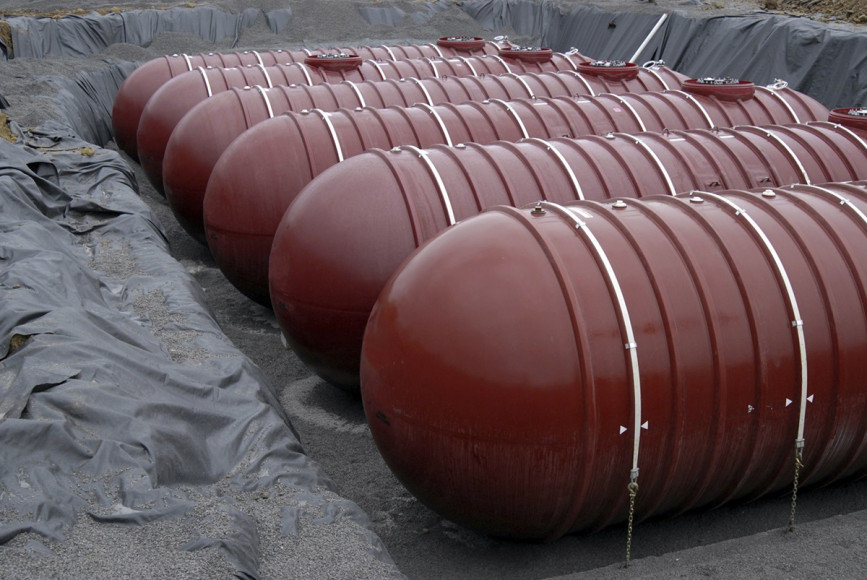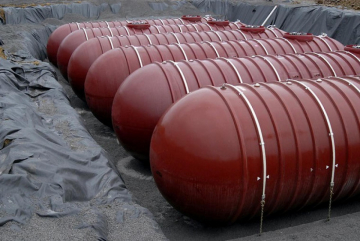If you own underground storage tanks (USTs), you probably already know that they are regulated to help protect the environment, public health, and safety. These regulations are designed to minimize the risks associated with the storage of hazardous substances in USTs and to ensure that UST owners / operators follow best practices to prevent leaks and respond effectively in the event of incidents.
Regulations governing USTs typically come from a combination of federal, state, and local agencies. In the United States, UST regulations are established and enforced either federally through the U.S. Environmental Protection Agency (EPA) or through State run UST programs. The EPA sets forth federal regulations for USTs under the Resource Conservation and Recovery Act (RCRA) and the Comprehensive Environmental Response, Compensation, and Liability Act (CERCLA). These regulations provide a baseline of requirements that UST owners/operators must follow.
As a UST owner/operator, it’s important to keep in mind that UST regulations can change over time as new information becomes available or as environmental concerns evolve. Regulatory agencies regularly review and update UST regulations to address emerging issues, improve safety standards, and enhance environmental protection.
So, that’s why it’s essential to be aware of the specific Federal or State regulations or updates for your USTs, as compliance is mandatory and subject to enforcement actions, including fines and penalties. The last thing you want is to undergo an inspection, be caught off guard if you have deficiencies, and then face potential fines from the EPA.
The Crackdown from the EPA
Last year, the EPA settled fines with some companies that did have deficiencies. In 2022, inspections from the EPA revealed that two large companies and five smaller firms operating along the eastern coast of the US had deficiencies in their UST operation and maintenance programs. Because of this, in October 2023, those companies agreed to pay fines related to their alleged violations. Some of the violations included “…[failure] to meet operator training, record keeping, and leak detection requirements for USTs”, as well as one company violating “federal rules on spill prevention, inspections, and operator training”. The fines ranged from $26,500 to upwards of $40,000 per company.
Examples of Non-Compliance with UST Regulations
The EPA listed specific violations that led them to fine those companies with non-compliant USTs. What are some other examples of being non-compliant with UST regulations that you should be aware of? Some common violations include:
- Failure to maintain leak detection systems or equipment.
- Inadequate corrosion protection measures for tank components.
- Failure to perform required inspections and testing.
- Improper handling and disposal of hazardous materials.
- Lack of documentation or recordkeeping for inspections, testing, or maintenance activities.
- Failure to demonstrate financial responsibility for cleanup and remediation in the event of a release.
- Non-compliance with requirements for tank closure and removal.
- Improper handling of UST system upgrades or modifications.
What are the UST requirements I need to Know?
- Release Detection: UST owners / operators must have methods and equipment in place to detect releases or leaks from their USTs. Common methods include automatic tank gauging systems, groundwater monitoring, vapor monitoring, and statistical inventory reconciliation.
- Release Prevention: USTs must have spill and overfill prevention measures, such as spill buckets, overfill alarms, and emergency shutoff systems. USTs must also be designed and constructed to prevent releases due to corrosion.
- Corrosion Protection: UST systems installed after certain dates are required to have corrosion protection for metal components. This can be achieved through methods such as cathodic protection or fiberglass-reinforced plastic construction instead of metal.
- Financial Responsibility: UST owners / operators must demonstrate financial responsibility to cover the costs of cleanup and remediation in case of a release. This can be done through insurance, bonds, or other financial mechanisms.
- Notification: UST owners / operators are required to report suspected or confirmed releases to regulatory authorities promptly. This includes notifying the appropriate state and local agencies.
- UST Closure: When a UST is permanently closed, owners / operators must follow specific procedures for proper closure, including cleaning and removing the UST, sampling beneath the UST and piping, documenting these findings, possibly conducting soil and groundwater assessments, and notifying regulatory agencies.
- Operator Training: UST operators and employees responsible for tank operation, maintenance, and recordkeeping must be trained by a federal or state certified A, B, or C Operator training provider to ensure safe and compliant UST management.
- Recordkeeping: Detailed records must be maintained for UST systems, including installation, inspection, testing, maintenance, and release detection activities. Keep in mind, UST inspection and maintenance records must be kept for at least 3 years.
- Compatibility: UST systems must be compatible with the substances stored in them, including the use of compatible materials and equipment.
- Spill Reporting and Response: UST owners / operators must have procedures and equipment in place for responding to spills and releases promptly.
- Periodic Testing and Inspections: UST systems must undergo regular testing and inspections to ensure compliance with federal and state regulations. This includes regular leak detection testing, monthly inspections and often 3rd party verification of compliance.
How do I know if my USTs are in Compliance?
Permit renewals often require proof of compliance such as documentation of lead detection and inspections. Regulations may require thirty party verification of permit operation requirements. An internal management system is also useful for tracking and documenting UST system requirements, inspections, testing, alarms, and other permit requirements. In addition to that, owners / operators could consider implementing a corporate UST operations program, utilizing a consultant for proper UST inspections, testing, and record keeping, and / or using a certified UST operator training platform.
Conclusion
Remember, non-compliance with regulations governing USTs can be found during various stages of UST operation, inspection, and regulatory oversight. Once non-compliance is identified, regulatory agencies typically take corrective actions, which may include issuing fines or penalties, requiring remediation efforts, issuing enforcement orders, or imposing additional compliance requirements. In summary, all UST owners / operators are responsible for addressing non-compliance promptly to avoid legal and financial consequences.
Do you need help with your UST compliance? Reach out to our team of experts today!
Want more news and insights like this?
Sign up for our monthly e-newsletter, The New Leaf. Our goal is to keep you updated, educated, and even a bit entertained as it relates to all things EHS and sustainability.
Have any questions?
Contact us to discuss your environment, health, safety, and sustainability needs today.






